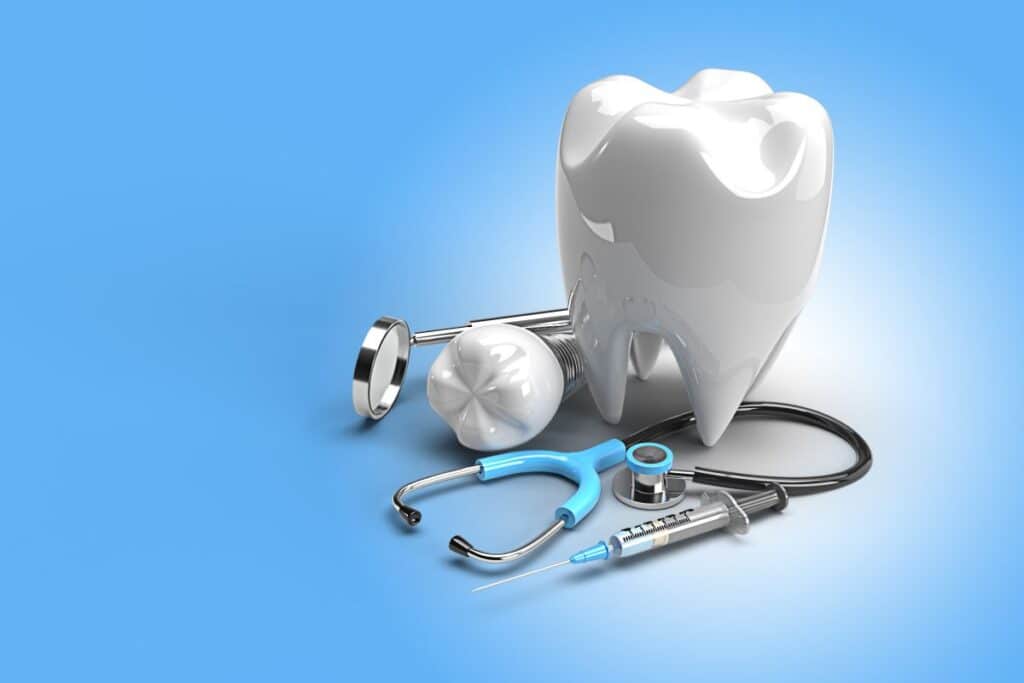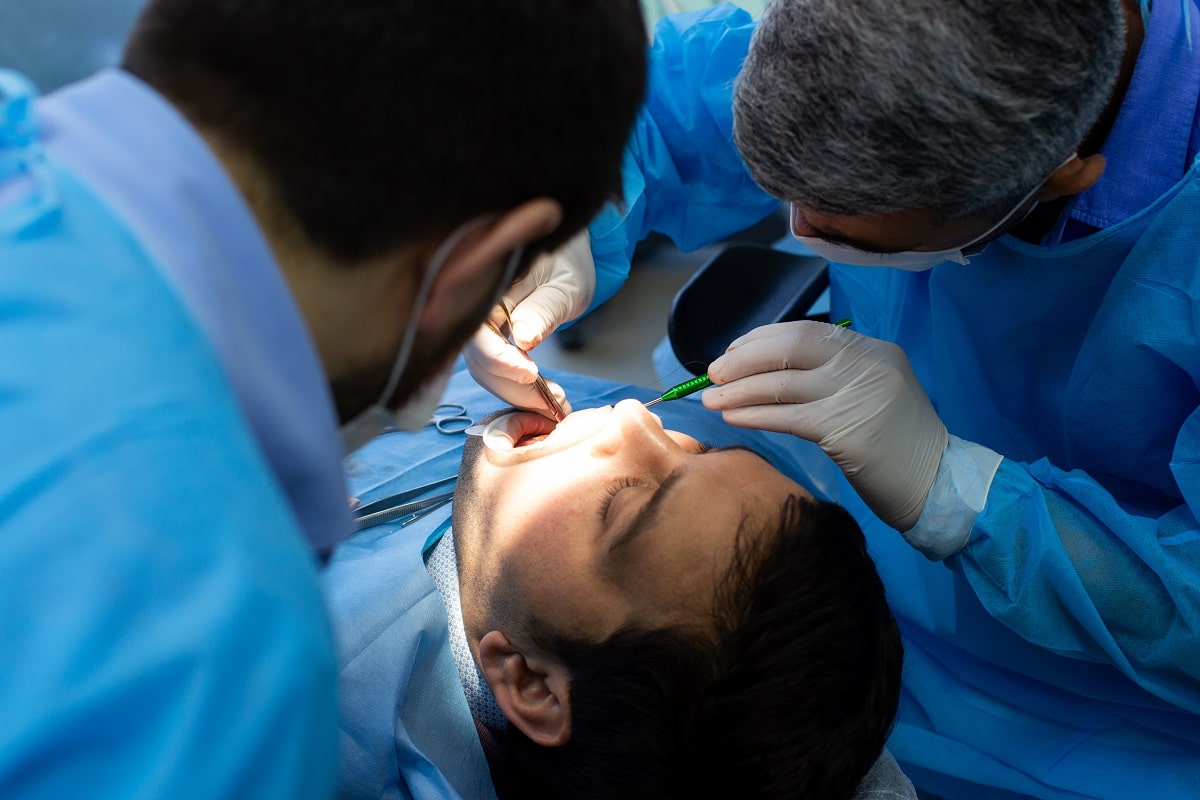Table of Contents
Dental implants have witnessed a surge in popularity in Australia, emerging as a sought-after solution for individuals seeking permanent tooth replacement. As more people recognise the benefits of dental implants, it becomes crucial to delve into the various factors influencing their costs.
In this comprehensive exploration, we will analyse the historical evolution of dental implants in Australia, the current state of implant costs, and how technological advancements are shaping the landscape.
Understanding the keyword at the heart of this discussion, “Dental Implants cost,” is pivotal in navigating the intricate web of economic considerations tied to this innovative dental procedure.
Historical Perspective on Dental Implants in Australia
Early Developments and Adoption
The journey of dental implants in Australia traces back to their early developments, with pioneering efforts aimed at providing a durable alternative to conventional tooth replacement options.
In the nascent stages, accessibility was a significant challenge, with only a limited segment of the population able to afford these procedures.
Initial Costs and Accessibility Issues
Historically, dental implants cost were prohibitive, restricting access to a privileged few. This exclusivity posed a substantial barrier to widespread adoption.
However, as technology evolved, so did the potential for making dental implants more affordable and accessible to a broader demographic.
Evolution of Technology in Dental Implant Procedures
The turning point for dental implants came with the integration of technological advancements. Innovations in materials, imaging, and surgical techniques gradually transformed the landscape, making dental implants more efficient and cost-effective. The evolution of technology paved the way for a more inclusive approach to tooth replacement.
Expansion of Dental Implant Practices
As technology continued to advance, the field of dental implantology in Australia saw a significant expansion. More dental professionals began to specialise in implant procedures, and educational institutions incorporated dental implant cost into their curricula.
This growth in expertise and knowledge not only improved the quality of care but also contributed to the reduction of overall dental implants cost. The increased number of practitioners allowed patients to choose from a wider pool of experienced professionals, thus enhancing their options for dental implant treatment without exorbitant dental implant cost.
Regulation and Standardisation
With the rise in popularity and accessibility of dental implants, it became imperative to establish regulations and standards to ensure patient safety and the quality of care without compromising dental implant cost.
Regulatory bodies in Australia, such as the Dental Board of Australia, played a pivotal role in setting guidelines and standards for dental implant procedures while considering dental implant cost. These regulations aimed to guarantee that practitioners followed best practices, which further instilled confidence in patients considering dental implants despite concerns about dental implant cost.
Public Awareness and Patient Education
Concurrent with the technological and regulatory advancements, efforts were made to increase public awareness and educate patients about dental implant cost and dental implant options.
Dental organisations, associations, and practitioners conducted awareness campaigns and informational sessions to inform the public about the benefits of dental implants and address common misconceptions about dental implant cost.
These initiatives helped dispel myths and empowered patients to make informed decisions about their oral health without the burden of exorbitant dental implant cost.
Affordability and Insurance Coverage
As dental implant procedures became more mainstream, the dental implant cost gradually decreased due to competitive pricing and the availability of various implant materials at more affordable dental implant cost.
Additionally, some insurance providers began to offer coverage for dental implant surgeries, making them a more financially viable option for many individuals and mitigating concerns about dental implant cost. This shift in insurance coverage played a crucial role in enhancing the accessibility of dental implants to a broader segment of the population without a significant increase in dental implant cost.
International Collaborations and Research
Australia’s participation in international collaborations and research initiatives also contributed to the advancement of dental implant technology while addressing concerns about dental implants cost.
Collaboration with leading global institutions and researchers allowed Australian professionals to stay updated on the latest developments in implant dentistry without substantially affecting dental implant cost. This international exchange of knowledge and expertise continued to drive improvements in the field without causing a surge in dental implant cost.
Current State of Dental Implants Cost in Australia
Overview of Average Costs
As of the present, the average cost of dental implants in Australia can vary based on several factors, including the location, the complexity of the case, the choice of dental professional, and additional procedures that may be required. It’s important to note that these figures are approximate, and actual costs may vary.
On average, a single dental implant in Australia may range from AUD 3,000 to AUD 6,500. This cost typically includes the implant itself, the surgical procedure, consultations, and follow-up appointments. It’s essential to consider additional costs, such as the abutment (connecting the implant to the prosthetic tooth) and the crown or artificial tooth. Ancillary services like sedation or anaesthesia, if required, may also contribute to the overall expense.
It’s advisable to consult with dental professionals in your specific location to get accurate and up-to-date information on dental implants cost.
Additionally, dental insurance coverage for implants is an evolving aspect. Traditionally, dental implants were considered elective procedures, and insurance coverage was limited. However, policies have been adapting to the increasing recognition of dental implants as a crucial aspect of oral health. It’s recommended to check with your insurance provider to understand the extent of coverage for dental implant procedures.
Keep in mind that the cost of dental implants reflects not only a financial investment but also an investment in long-term oral health and well-being. Understanding the breakdown of costs and exploring insurance options can empower individuals to make informed decisions regarding dental implant treatment.
Factors Contributing to Variability
Several factors contribute to the variability in dental implants cost. Geographic location, dental practitioner fees, and the choice of dental materials all play a role. Additionally, the inclusion of auxiliary services such as sedation and follow-up care add to the overall expense.
Importance of Considering Long-Term Benefits
While the initial costs of dental implants might seem higher than alternative options, it is crucial to emphasise the long-term benefits. Dental implants offer durability and functionality that surpass traditional solutions. Understanding the enduring value is essential for individuals assessing the cost-effectiveness of dental implants.
Technological Advancements in Dental Implant Procedures
Introduction to Recent Technological Innovations
The contemporary landscape of dental implants is marked by rapid technological progress. Recent innovations are revolutionising the field, enhancing precision, efficiency, and overall patient experience.
Impact of 3D Printing in Implant Manufacturing
One of the game-changers in dental implant technology is the integration of 3D printing in manufacturing. This allows for the creation of custom implants with unparalleled precision, reducing production costs and enhancing the overall fit and comfort for patients.
Role of Digital Imaging in Treatment Planning
Digital imaging technologies have transformed treatment planning, providing dentists with detailed 3D representations of a patient’s oral structure. This not only improves the accuracy of implant placement but also contributes to a more streamlined and efficient process.
Robotics and Automation in Surgical Procedures
The use of robotics and automation in dental implant surgeries is another leap forward. Automated systems enhance the precision of implant placement, reduce surgery time, and, in the long run, contribute to cost-effectiveness by optimising resources and minimising errors.
Cost-Effective Technologies in Dental Implant Procedures
Technologies Contributing to Cost-Effectiveness
Certain technologies not only enhance the quality of dental implant procedures but also contribute to cost-effectiveness. For instance, the use of computer-aided design (CAD) and computer-aided manufacturing (CAM) streamlines the production process, reducing material wastage and associated costs.
Examples of Technologies Streamlining Processes
Advanced imaging software not only aids in treatment planning but also allows for virtual surgical simulations. This technology reduces the margin of error, optimising the use of resources and contributing to overall cost-effectiveness. Additionally, improved communication systems facilitate collaboration among dental professionals, ensuring a cohesive and efficient treatment process.

Influence of Material Science on Dental Implants Cost
Exploration of Materials Used in Dental Implants
The materials used in dental implants have a direct impact on their overall costs. Traditionally, titanium has been the material of choice due to its biocompatibility and strength. However, ongoing research in material science is introducing alternatives that may offer comparable benefits at a potentially lower cost.
Correlation Between Material Quality and Costs
There exists a delicate balance between the quality of materials and the associated costs. Higher-quality materials may contribute to the longevity and success of dental implants but can also escalate the overall expenses. Understanding this correlation is vital for both practitioners and patients in making informed decisions.
Advancements in Materials Contributing to Cost Efficiency
Recent advancements in material science are showing promise in providing cost-efficient alternatives. Bioresorbable materials, for instance, offer the advantage of gradual degradation, eliminating the need for secondary removal procedures and potentially reducing long-term costs.
Training and Education in the Technological Era
Role of Advanced Education in Reducing Procedural Costs
The integration of technological advancements in dental implant procedures necessitates ongoing education for dental professionals. Dentists trained in the latest technologies can perform procedures more efficiently, reducing the overall time and resources required for each case.
Impact of Trained Professionals on Treatment Costs
Investing in training and education pays dividends in terms of procedural efficiency and patient outcomes. Trained professionals are better equipped to leverage technological innovations, leading to a more streamlined and cost-effective implant process.
Insurance and Dental Implants Cost
Analysis of Insurance Coverage
The landscape of insurance coverage for dental implant procedures is evolving. Initially considered elective, dental implants are gaining recognition as a vital component of oral health. Consequently, insurance providers are adapting their policies to include coverage for certain aspects of implant treatment.
Changes in Insurance Policies with Technological Integration
The integration of new technologies in dental implant procedures is influencing insurance policies. As the procedures become more standardised and predictable, insurance coverage is expanding to encompass a broader range of costs, making dental implants more financially accessible to a larger population.
Patient Perspectives and Decision-Making Factors
Survey of Patient Attitudes
Understanding patient attitudes towards technology-driven dental implant procedures is crucial. Surveys reveal a growing acceptance and preference for procedures that incorporate advanced technologies, with patients recognising the potential benefits in terms of efficiency and outcomes.
Factors Influencing Patient Decisions
Patient decisions regarding dental implant treatments are influenced by various factors, with cost being a primary consideration. However, as awareness of the long-term benefits grows, patients are increasingly willing to invest in procedures that offer superior durability and functionality.
Future Trends in Dental Implant Technology and Costs
Predictions on Technological Advancements
The future of dental implant technology holds exciting possibilities. Predictions include further refinement of 3D printing techniques, integration of artificial intelligence in treatment planning, and the development of even more biocompatible materials. These advancements are anticipated to drive down costs through increased efficiency and accessibility.
Balancing Accessibility and Innovation
A critical challenge for the future lies in striking a balance between accessibility and innovation. While cutting-edge technologies enhance the quality of care, efforts must be made to ensure that these innovations do not inflate costs to the point of excluding a significant portion of the population.
Conclusion
The landscape of dental implants cost in Australia is intricately woven with technological advancements. From historical challenges of accessibility to the current state of variability, technology has been a catalyst for positive change. The impact of 3D printing, digital imaging, robotics, and cost-effective materials cannot be understated.
As we navigate the future, it is evident that the dynamic relationship between technology and dental implants cost will continue to shape the accessibility, affordability, and overall success of this transformative dental procedure.
Recognising the significance of these technological influences is essential for both dental practitioners and individuals seeking long-term solutions for tooth replacement. Dental implants, once a luxury, are gradually becoming a more accessible and cost-effective option, thanks to the ever-evolving landscape of dental technology.




